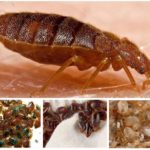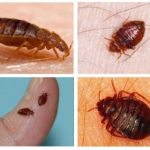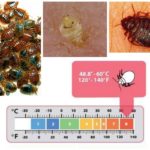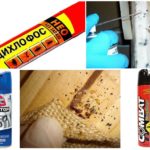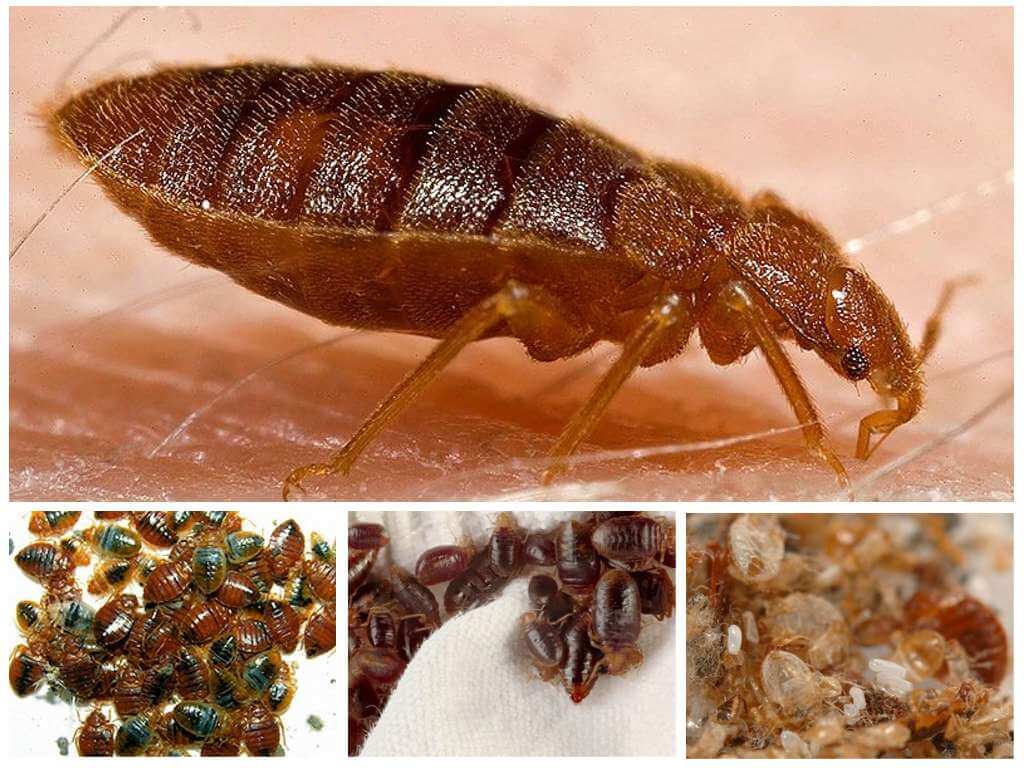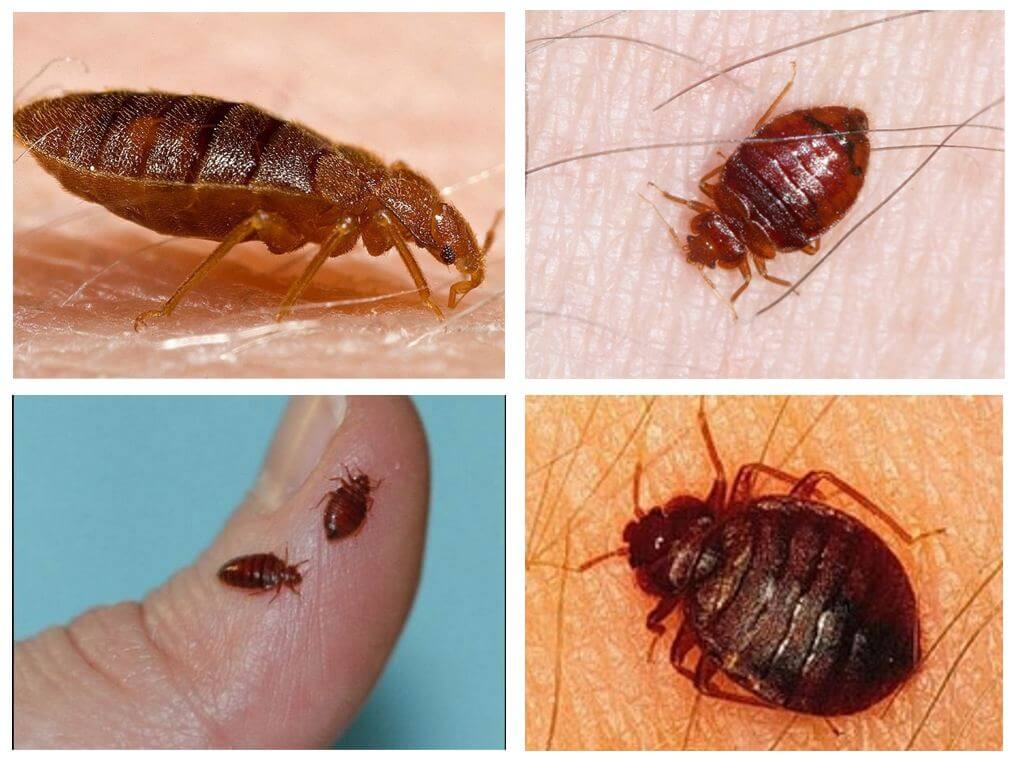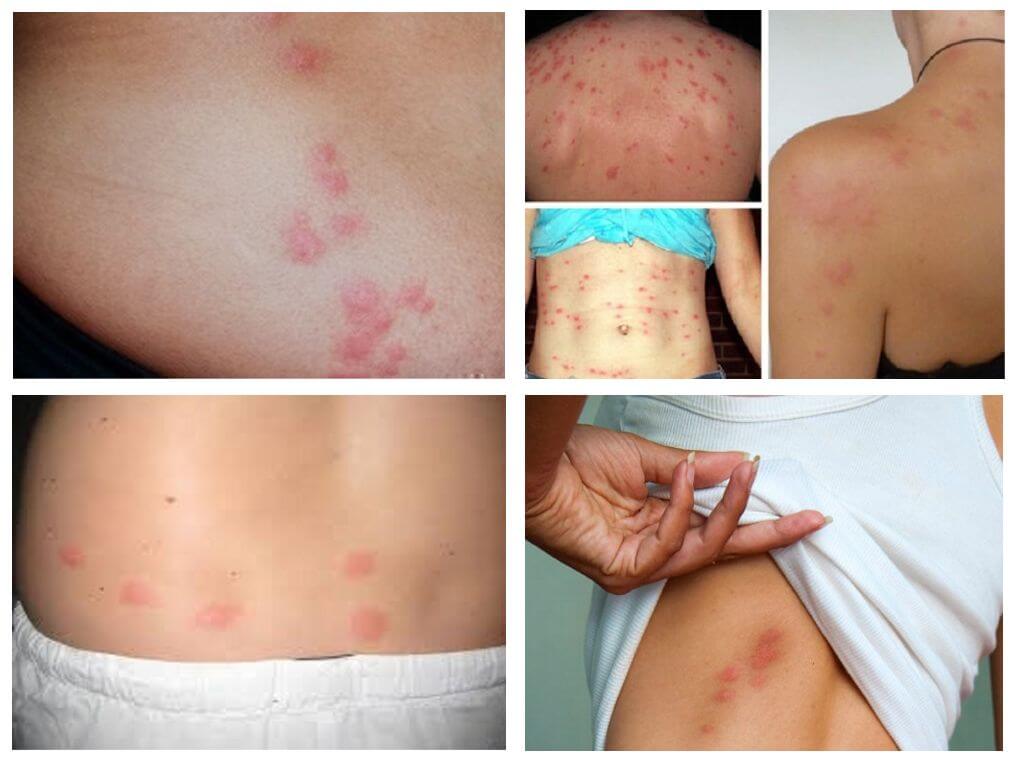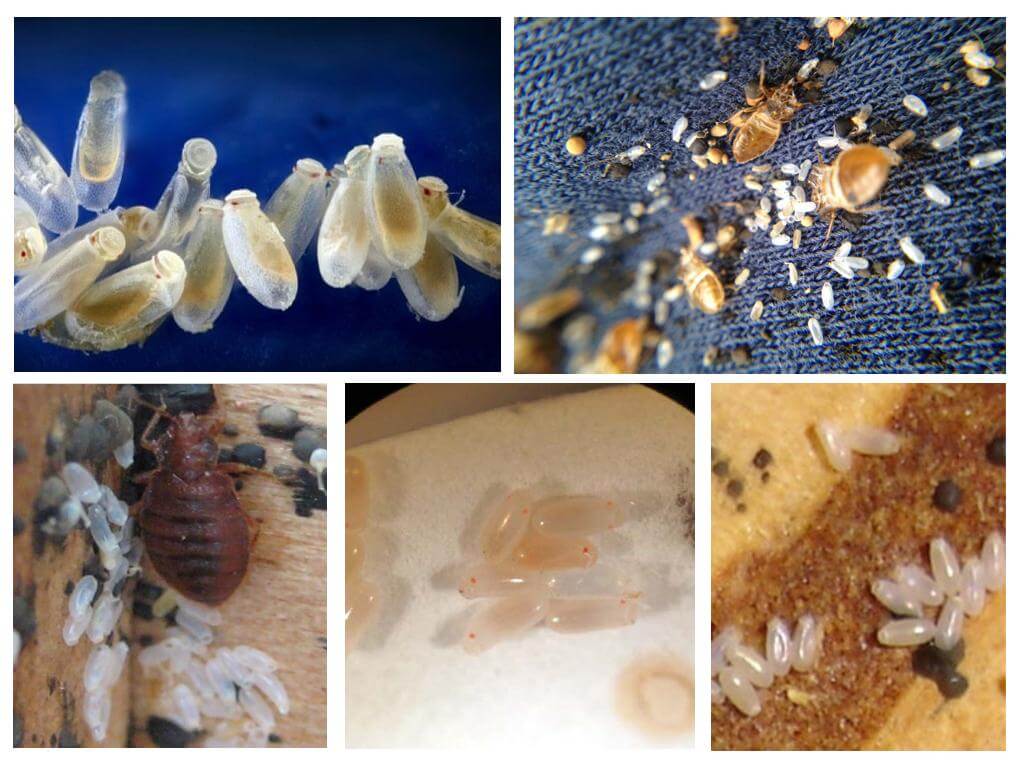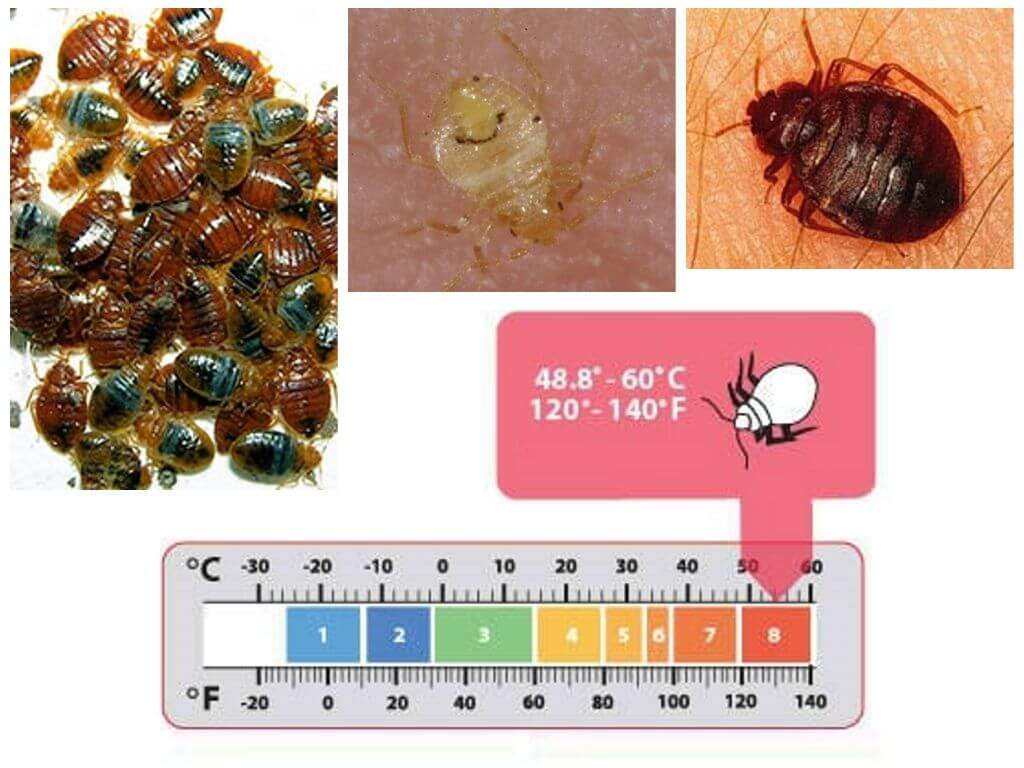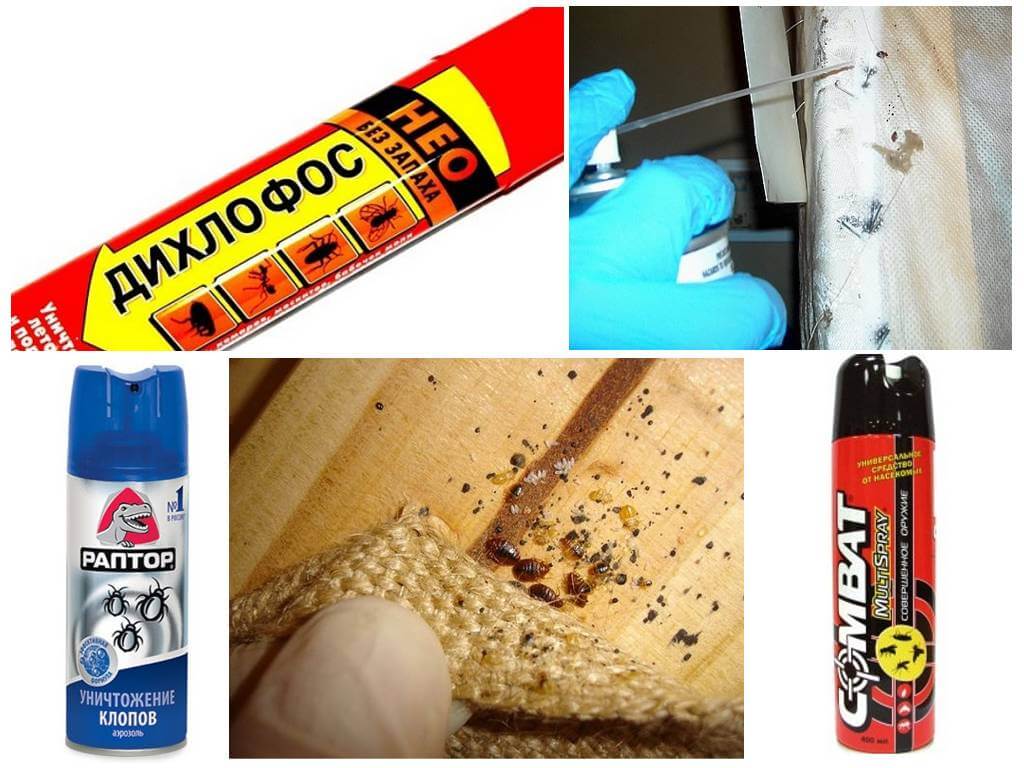What does a furniture bug look like and how to get rid of it
Content
- Bed bugs
- Bed bugs
- Bedbug bites
- Bedbug eggs
- The death of bedbugs
- Bed Spray
Furniture bugs - the same age as dinosaurs. Over the long evolution of the insects are ideally adapted to a particular way of life. Fossil ancestors of bugs had wings and fed on plant sap, like many modern species of bedbugs. But over time, a whole family of synanthropic insects, which began to feed on blood, emerged.They survived their first food source, dinosaurs, and are still resistant to natural factors and chemical control methods.
Appearance
Furniture bug, he's bed bug, he's home, he's laundry. Under the abundance of names lies one pest, which settles closer to the source of food - man, birds, animals. It does not matter for him where to dwell - in a cave, a bird's nest, a hole in the beast, or a comfortable city apartment. The main thing is to be near a warm-blooded creature on which he could eat.
Small, 3–9 mm adult furniture bugs have a flattened body, ideally suited to penetrate tiny crevices. A new generation has grown up that doesn't know what the furniture bugs look like. Synthesized pyrethrins have reduced the population of bedbugs by as much as 30 years. But gradually the insects adapted themselves and developed immunity to insecticides, which led to the appearance of a large number of parasites.
Interesting!
In 400 BC, in medical manuscripts, bedbugs were described as a remedy for pain in the ears, snake bites, and hysteria.At the end of the seventeenth century, Thomas Moufet wrote that the furniture bug in many medicines is an important component. In a book on homeopathy, published in America in the XIX century, recited tincture of furniture bugs from malaria. Healers in ancient Greece were prepared from crushed bedbugs and breast milk ointment from eye infections.
Furniture bugs in the photo look menacing and intimidating. The body is covered with chitinous cover. But the belly has a division into segments, due to which the insect increases in sizewhen eats. The structure of the body and the plasticity of the joints of its parts makes the parasite invulnerable to mechanical methods of destruction.
The insect has three pairs of articular legs, which are fleeing. With their help, it moves briskly, making short dashes. The head with a sloping forehead allows you to dig deep into the skin, reaching the blood vessels.
Oral apparatus and method of nutrition
The oral apparatus of the piercing-sucking parasite type. The lower mandibles form a pointed tubule, lateral mandibles gnaw through the skin and push the tube deep into. Nearby is a groove, in which the ducts of the salivary glands exit.Bedbug injects into the wound enzymes that have an analgesic, anticoagulant and astringent effect. Prefers to bite the parasite in places with thin skin - sides, inner side of the forearm. But more often you can find traces bedbugs bites on those parts of the body that remain naked during sleep.
Interesting!
In order to be able to fertilize the female, and the female to lay eggs, parasites need to completely “fill up” with blood at least twice. A female at a time can suck up about 7 mg of blood, which is three times her own weight. By the color of the abdomen, you can determine how long the bug was eating. The color varies from scarlet (fresh blood) to almost black (digested blood, feeding time about 3-4 hours).
Bed or furniture bug eats blood at all stages of development. Larvae to move to the next age you need to eat more often than adults. On the abdomen, legs and antennae of the insect are sensitive sensors that respond to temperature and odor. Thanks to them, the bug at a considerable distance feels its victim.
Insect bites do not pose a threat to humans.Dangerous proteins in saliva that cause an immune response and viruses that can persist within the parasite for a long time in a virulent state are dangerous. Characterized by parasites bites. Furniture bugs leave after their "meal" a path of several tracks. Linearity is due to the fact that the insect moves along the blood vessel. This is the location and signals the presence of furniture bugs in the house. Adult bloodsuckers and their nymphs can bite.
Breeding mode and life cycle
It is interesting to study how the furniture bug breeds. Mating occurs in a traumatic way. With a sharp organ, the furniture bug pierces the abdomen of the female and injects seminal fluid. It is transported to a special body, which can be for a long time and spent as needed.
Interesting!
Gametes, which are in the body of the female, in emergency cases are used by her as a power source. This increases the chances of survival, especially in the absence of food. For all her life, the female individual postpones 250-500 eggs.
With a favorable microclimate, the female can lay more than 5 eggs daily.In addition to the storage of gametes, the Berleze organ produces substances that promote regeneration during traumatic fertilization.
In search of a partner, the male is guided not only by smell, but also by the size of the object. This is due to the fact that the larvae looks very similar to imago, but differ in size. The larger the object, the more ready for fertilization. Therefore, very often males “make mistakes” and copulate with males. It is also unique that the seminal fluid in the body of the "covered" male is mixed with his own. During fertilization, he injects several sets of gametes into the female. Despite the fact that almost 50% of sexual acts are homosexual, valuable seed material is not lost.
After a week nymphs of the first stage come out of the laid eggs. The total number of stages that a nymph goes from exiting an egg to an imago is five. The whole process takes 1-1.5 months. But everything in the life of the parasite depends on habitat conditions.
Living conditions
Furniture bugs can exist in a narrow temperature range. The upper limit of comfort is + 30 ° С, and the lower one is + 14 ° С. At + 14 ° С, females stop laying eggs, and the larvae stop growing and shedding. At + 10 ° C, the development of eggs stops.At low temperatures, parasites fall into a state similar to lethargy, in which they can exist for a long time.
But the subzero temperature does not kill furniture bugs immediately. At -16 ° C, they remain viable for 2-3 days. Only temperatures below -20 ° C can destroy the parasite almost instantly.
High temperatures stimulate all life processes, but also shorten the lifespan due to accelerated metabolism. Instantly destroy furniture bugs by acting on them with temperatures above + 50 ° C.
Parasites are slightly less sensitive to moisture fluctuations, since chitinous cover inhibits moisture loss by the body. But long being in conditions of low humidity and high temperature, the insect dries out. It can without loss damage one-third of the fluid in the body.
Interesting!
Even when in a state of stupor, the parasite is sensitive to the heat of the body of the potential victim and its smell. Having caught the signal, the bug is activated and goes to feed. In terms of comfort, bugs in furniture can live for about a year. In the state of "lethargy" this period is increased to 15 months.
Methods of dealing with parasites
People have long used freezing and processing of furniture with hot steam or boiling water for the destruction of parasites. Heat treatment is not the most effective method of getting rid of blood suckers. It is technically difficult to freeze the whole house without damaging the water supply, and heating the room to + 50 ° C is a risk of damaging some things. In large cities, such as Moscow, efficient treatment of apartmentsheavily infected with furniture bugs, carry out special disinsection services. But not everywhere such services are available. Therefore, a person needs to know how to get rid of furniture bugs on their own.
There are many on the market effective means in various forms of release:
Each tenant of an infected apartment can choose the most effective and convenient means of use in order to get rid of bed bugs at home.
Modern drugs include several types of insecticides to increase the damaging ability and to ensure the destruction of even resistant generations of bedbugs.
If you succeed detect the location of parasitesthen even one treatment can not destroy them all. The house has to be processed several times, since the insecticide causes the death of adult insects and larvae, but does not affect the laying of eggs. Re-processing is carried out when a new generation of parasites emerges from them.
In addition to processing places where bugs are most often:
- beds, upholstered furniture;
- nests under the wallpaper;
- in sockets;
- in the cracks.
Professionals recommend to process the ventilation grilles, window and door frames - the places of possible insect penetration into the house. The combination of destroy and barrier methods room treatments allow you to permanently eliminate parasites. Scientists continue to seek effective means of dealing with furniture bugs. Besides ultrasonic repeller, natural repellents and pheromone traps, they develop methods to control the population of parasites by acting on their genes.

